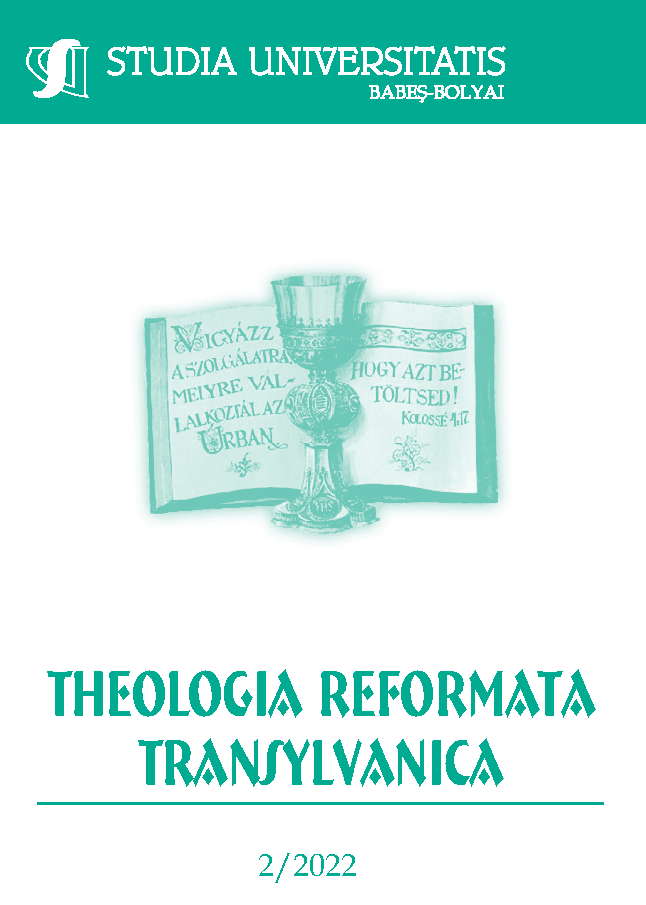Adalékok az Erdélyi Református Egyházkerület püspöki székhelye körüli vitákhoz a 18–19. században
DOI:
https://doi.org/10.24193/subbtref.67.2.08Keywords:
Transylvanian Reformed Diocese, General Consistory of the Transylva-nian Reformed Diocese, episcopal see, Enyed College, episcopal residenceAbstract
On the Debates about the Episcopal See of the Transylvanian Reformed Diocese in the 18th–19th Centuries. In parallel with the process of reorganization of the Transylvanian Reformed Diocese, some significant changes took place around the bishop’s office. The first change was around the bishop’s residence. From 1782, the bishop’s permanent residence was in Nagyenyed, in a building donated by Zsuzsánna Thoroczkay for this purpose. Since from then on, the bishop was the first priest of the parish of Nagyenyed, there was a question as to the source of his salary. No income was offered by the diocese for the bishop’s first priestly position. After a lengthy discussion, the General Consistory of the Transylvanian Reformed Diocese appointed the College of Nagyenyed to contribute Ft 300 to the salary of the first bishop of Enyed. The bishop, however, was not willing to give up his regular priestly position in another parish for this stipulated salary. Zsigmond Eperjesi was the first bishop to move from Felvinc to the new bishop’s residence in 1784, but only on the condition that he was paid a full teacher’s salary. The archives of the Enyed College were destroyed in 1849, and so we do not know exactly when and how the agreement was made according to which the bishop would receive approximately one teacher’s salary from the public treasury of the college during his time in Enyed. Bishop János Antal also lived in Enyed until 1849. In November 1849, Bishop János Antal, who was already very weak, fled to Târgu-Mureș as a result of the revolutionary events, and the bishop’s residence in Nagyenyed fell into disrepair and became uninhabitable. From 1852, Samuel Bodola took over the bishop’s duties, initially from Târgu-Mureș, and from 1854 from Cluj-Napoca. In this study, we follow up the adverse circumstances and controversies that had led to the construction of a permanent episcopal residence in the 1890s, also in Cluj-Napoca, in parallel with the construction of the building of the Faculty of Theology in Cluj, which was to be the bishop’s residence.
References
BARTÓK György (1878): Bodola Sámuel, In: Nagy papok életrajza. Budapest.
LUKÁCS Olga (2010): Date privind istoria episcopiei reformate din Transilvania în secolele XVI–XVII, In: Lukács Olga et al. (szerk.): Evoluţia instituţiilor episcopale în Bisericile din Transilvania. De la începuturi până la 1740. Partea I. Cluj-Napoca, Presa Universitară Clujeană. 99–119.
(2015): Az Erdélyi Református Egyház 19. századi újraszervezése a kálvini egyházszervezet tükrében, In: Pálfi József (szerk.): Kálvini vonások a magyarok lelki arcán. Debrecen – Nagyvárad Hatvani István Teológiai Kutatóintézet, Debreceni Református Hittudományi Egyetem. 254–273.
(2020): Püspöki succesio és a patrónusi jog kérdése az erdélyi református egyházban a 18–19. században, In: Kiss Réka – Lányi Gábor (szerk.): Hagyomány–Identitás–Történelem. 2019 (Sorozat: Reformáció Öröksége 3/1). Budapest, L’Harmattan. 365–374.
MAKKAI Domokos (1878): Antal János, In: Nagy papok életrajza. Budapest.
Levéltári források:
Erdélyi Református Egyházkerület Levéltára, Főkonzisztoriumi Levéltár.
Erdélyi Református Egyházkerület Levéltára, Zsinati Levéltár.
Downloads
Published
How to Cite
Issue
Section
License
Copyright (c) 2022 Studia Universitatis Babeș-Bolyai Theologia Reformata Transylvanica

This work is licensed under a Creative Commons Attribution-NonCommercial-NoDerivatives 4.0 International License.



